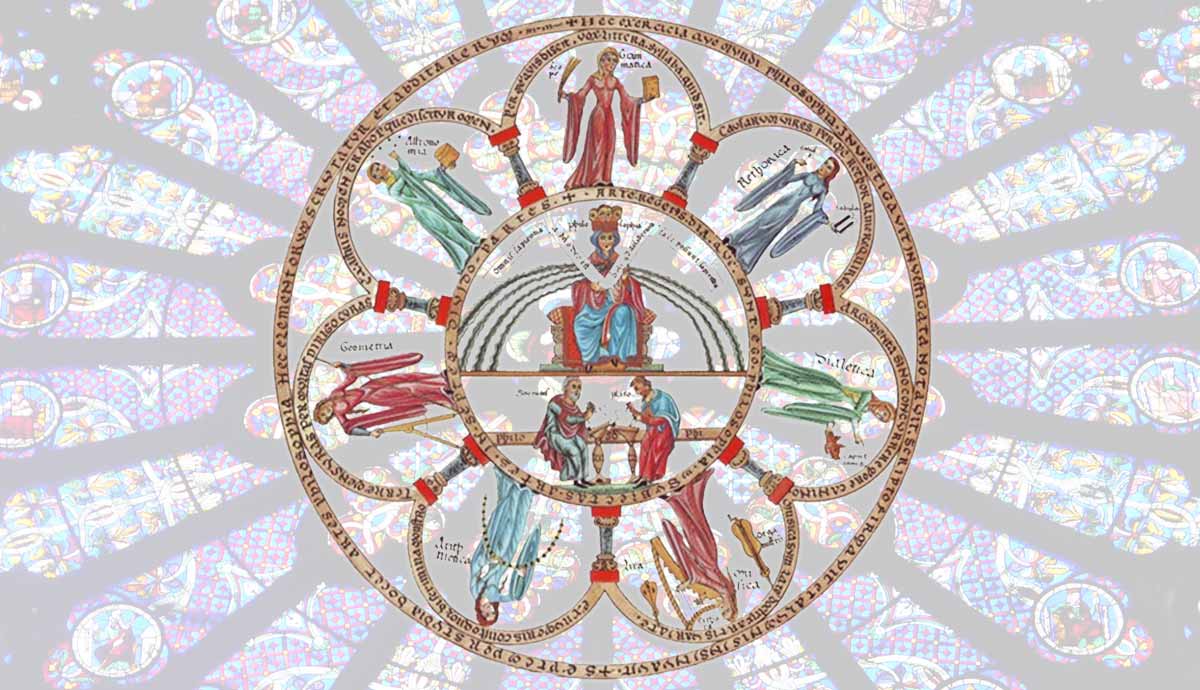
Edgar Allan Poe (1809-1849) was born in a year that also saw the births of Abraham Lincoln and Charles Darwin — a birthday year filled with great minds that would alter the course of history. Poe was a talented writer and editor, but he was prone to quarrels with other writers based on his professional opinions rather than personal animosity. Although he is remembered for his macabre and mysterious tales, he was also a meticulous bibliographer, had a keen interest in science and scientific ideas, and was a meticulous wordsmith.
Why Should You Read Edgar Allan Poe?
Poe was a versatile writer and editor, but the macabre and mysterious elements in his Gothic horror stories often overshadowed his output.
He Wrote More Than (Just) Horror Stories

In Some Words with a Mummy, a mummy is suddenly awakened and starts talking to some guests. Poe satirizes the modern world’s belief that they are superior to their ancient counterparts. The mummy contradicts everything they believe, stating that his people already did it better 2,000 years ago. The humor lies in how dumbfounded the scholars are.
Poe is also credited with being the inventor of the detective story. Elements of The Murders in the Rue Morgue are said to have influenced Sir Arthur Conan Doyle’s character Sherlock Holmes — especially Poe’s character Auguste C. Dupin.
His Poems are Hauntingly Beautiful

Poe’s poems are miniature worlds filled with rich language brimming with atmosphere, imagery, and lyricism. He reaches deep into the human experience and pours his soul into his poems while taking the reader on a rollercoaster ride of feelings.
His Stories Can Be Read in One Sitting

Poe believed you should be able to read a story in one sitting to savor the entire experience in a measured dose. However, I would not call it a “short and sweet” reading… There is nothing sweet in most of Poe’s short stories. Poe probably understood that people had things to do and kept his readers occupied long enough to finish a story and then carry on with their daily tasks. His writing might be meandering but every word carries weight and works together in perfect unity to deliver a punch.
Poe Understood Being Human is Complex

Poe understood people better than we think. Unfortunately, he highlights our flaws. Or, maybe, he seeks to warn us about the corrupting and dark qualities that lie within each person and not to seek those out. Many of his stories can be seen as miniature lessons on morality.
Author Catherine Baab-Muguira draws inspiration from Poe’s (quite troublesome) life and works in her book Poe for Your Problems and offers readers creative and novel ways to deal with their issues.
4 Works by Poe You Should Read

Below is a selection of works by Poe that everyone should read (in one sitting) from the satirical to the fantastic to the psychological. Poe wrote something for everyone.
1. The Narrative of Arthur Gordon Pym of Nantucket (1838)

Poe was not having much success with his short stories earlier in his career and wrote The Narrative of Arthur Gordon Pym of Nantucket to show his prowess as a writer. Although the work was not favorably received by most critics, it still holds a special place in Poe’s development as a writer.
The novel, Poe’s only “complete” one, focuses on Arthur Gordon Pym’s surreal adventures at sea. Pym sets out with his companion Dirk Peters after they are rescued by the crew of the Jane Guy. They encounter strange lands, flee from natives, and set sail for the South Pole. Poe crafted the novel from real-life sea voyage accounts and the reigning theories of his day. Themes like race, exploration, and symbolic mystery are explored throughout the novel.
A young Pym and boyhood friend, Augustus, have their first disastrous sailing experience on Pym’s sailboat, Ariel. A sudden storm threatens their lives but luckily, they are rescued by the crew on board a whaling ship, the Penguin. Both vow to keep the incident a secret.
As Pym grows older his taste for adventure grows. Finally, he sneaks on board Augustus’s father’s ship, Grampus, as a stowaway. Unfortunately, things quickly go wrong when mutiny turns into bloodshed and chaos on board the ship. A mournful mutineer, Dirk Peters helps Pym and Augustus to reclaim the ship. Pym disguises himself as a ghost to scare the mutineers off. They take Richard Parker as a hostage-turned-helper to help them run the ship.

The four survivors survive starvation and storms. However, their troubles only increase when they encounter a ghostly Dutch ship filled with corpses. To survive, they resort to cannibalism by eating the mutineer Richard Parker after they draw lots. But Augustus later dies due to injuries he acquired when they reclaimed the Grampus. This leaves Pym and Peters to fend for themselves. A passing Liverpool ship, Jane Guy, rescues them — barely clinging to life.
They continue southward exploring and hunting with the other sailors. Again, they narrowly escape death on the strange island of Tsalai. Its inhabitants are Black-skinned natives who have never seen people any other color than Black. At first, the sailors along with Pym and Peters are welcomed by the chief, Too-Wit. However, as time progresses, the chief and his people betray the sailors and massacre them. Pym and Peters escape with a stolen boat and a Tsalai native as their prisoner.
They drift through strange landscapes and encounter strange, warm milky waters, raining ash, and thick mist that opens to accommodate their entrance. An ominous white figure appears, and the native dies at the sight of the figure and the novel ends abruptly.
Poe’s editors explain in a postscript to the novel that Pym was lost in an accident and the final chapters of his story were with him — as soon as they are recovered they will be published. Further, Peters is alive and in Illinois but could not be reached for an interview.
To bring a hint of closure to Pym’s story, the editors infer that the ancient symbols Pym notes in his writings hint at a journey to the South Pole.
2. The Fall of the House of Usher (1839)
This is one of Poe’s most famous works along with The Black Cat, The Cask of Amontillado (external live-action video), and The Tell-Tale Heart (external live-action video).
The story opens with an unnamed narrator who goes to visit his sick friend, Roderick Usher, in a remote part of the country in his family mansion. Roderick believes the house is alive and his fate is connected to it — its eventual demise will lead to Roderick’s own.
Roderick’s sister is sickly. One evening Roderick believes his sister has died and entombs her underneath the house to keep her body safe from potential body snatchers.
As time progresses, Roderick becomes unhinged and believes his sister has risen from the dead. On a stormy night, Roderick bursts into the narrator’s room and tries to calm his nerves by reading from a story. Finally, Roderick loses all sense of reality and Madeline appears in a doorway.
In a vengeful act, the undead Madeline topples on top of Roderick killing both herself and her twin brother. The narrator flees the house before it splits down the middle and sinks into the murky waters surrounding it.

There are a myriad of interpretations of Poe’s classic as a Gothic Horror story. We may infer a link to Egyptian mythology where the gender roles are reversed, and Madeline is Osiris and Roderick is Isis. There is no explicit mention of an incestuous relationship between Roderick and Madeline, but it is suggested because of the close bond between them. This supports the Egyptian interpretation; Isis and Osiris are both brother and sister but are married — a matter of consanguinity.
Psychological interpretations see the house as a split psyche and Roderick, Madeline, and the house as unique personalities within one person.
Some scholars suggest vampirism when the house preys on the Usher twins and drains their life force.

Taking Roderick’s strange books into account, one could also infer a link to occultism as an interpretation. Roderick is involved in the dark arts and believes he can cure the family curse and revive his sister when she dies. Poe’s text, found in Tales (1845) on page 75, reads:
“Our books — the books which, for years, had formed no small portion of the mental existence of the invalid — were, as might be supposed, in strict keeping with this character of phantasm. We pored together over such works as the Ververt et Chartreuse of Gresset; the Belphegor of Machiavelli; the Heaven and Hell of Swedenborg; the Subterranean Voyage of Nicholas Klimm by Holberg; the Chiromancy of Robert Flud, of Jean D’Indaginé, and of De la Chambre; the Journey into the Blue Distance of Tieck; and the City of the Sun of Campanella. One favorite volume was a small octavo edition of the Directorium Inquisitorium, by the Dominican Eymeric de Gironne; and there were passages in Pomponius Mela, about the old African Satyrs and Aegipans, over which Usher would sit dreaming for hours. His chief delight, however, was found in the perusal of an exceedingly rare and curious book in quarto Gothic — the manual of a forgotten church — the Vigiliae Mortuorum secundum Chorum Ecclesiae Maguntinae.”
The late Professor Thomas Olive Mabbott (1973) writes: “Poe has been so often accused of quackery in his display of learning that it seems only fair to record some instances of his peculiar knowledge in a field where one would little expect to find him expert — bibliography.” The books in Roderick’s collection are indeed real.

Closer to our time, Mike Flannagan’s interpretation of Poe’s The Fall of the House of Usher on Netflix combines the dominant story with various other works by Poe. Each episode references several works by Poe. It is a horrific homage to the dark, yet cautionary, tales penned by the master of the macabre himself.
Yet, today, scholars still cannot agree upon a single, authoritative interpretation of the short story. Did Poe fail to give us a satisfactory straightforward story? Or, did he write a masterpiece that defies interpretation? Only Poe, the Ushers, and the house know the truth…
3. The Raven (1845)
Although The Raven catapulted Edgar Allan Poe to national prominence and became a household name, it did not bring him much financial success.
The Raven is often praised for its musical use of language—albeit stylized—and its supernatural atmosphere. This narrative poem tells the story of a student or scholar who lost the love of his life and is trying to presumably study an ancient text or collection of tales. The raven is witness to the man’s slow descent into madness and depression.
Poe used the poem in his essay, The Philosophy of Composition (1846), to illustrate his theories about good writing. The essay emphasized the importance of a work’s length, the unity of effect when portraying a certain element, and a logical approach to writing. According to Poe, “the death of a beautiful woman” is the ultimate poetic topic, and uses his poem The Raven to illustrate this point. It is, however, not certain whether the outlined principles found any footing in Poe’s writing processes.
Poe does, however, point out that he composed the poem to appeal to both popular and critical tastes. Each detail was meticulously planned, from setting the poem on a stormy night to forcing the raven to seek refuge from the storm to the color of the bust that will create a contrast with the bird’s dark feathers. Additionally, the appearance of Pallas, also known as Athena the goddess of knowledge and wisdom, links to the scholar who is seeking knowledge in a book of forgotten lore.
The poem has inspired countless artists. Even the popular cartoon, The Simpsons, features the poem in one of their episodes. French artist Gustave Doré also finished a set of illustrations for the work just a few days before he died in 1883.

The raven’s only utterance, Nevermore, is a foreshadowing technique used to illustrate the narrator’s never-ending remembrance of his beloved Lenore. It is also used to hint at the narrator’s endless troubles.
Throughout the narrator’s encounter with the raven, it remains stationary. It can be interpreted as a symbol of the narrator who is caught up in his grief and inability to move forward with his life because he fixates on a singular problem.
4. Some Words with a Mummy (1845)

Some Words with a Mummy is a satirical short story that explores and criticizes the Egyptomania craze that swept through Victorian England and to a lesser extent the US. The only contact people had with Egypt was through architecture, art, and literature. Egypt became a land filled with exoticism, mysticism, and eternal romance. Misconceptions and myths about ancient Egypt were also rife — from Tutankhamun’s curses to animal worship.
In Some Words with a Mummy, an unnamed narrator (Poe seems to love those!) settles into bed after a dinner of Welsh Rabbit and dark stout. Later he is awakened to witness the unwrapping of a mummy at Doctor Ponnoner’s home.
The mummy, Allamistakeo, is found to be in a perfect state of preservation. When the men apply electricity to aid them in the dissection Allamistakeo is awakened. He is upset because his rest is disturbed and the men apologize and explain their scientific interest. Apologies accepted, the men find some clothing for the mummy and they settle down for cigars and wine. Their conversation turns to Egyptian culture but the mummy also mocks the men for their belief in monotheism and for thinking their modern culture is superior to the mummy’s ancient race. Allamistakeo also shares his belief that humans were created through spontaneous generation in different places.
As the debate continues the mummy trumps the men in almost all categories. However, he finally admits defeat when the men mention the manufacture of certain lozenges and pills.
The narrator wakes up the next morning—not quite sure whether he was dreaming or experiencing a conversation with a mummy—and decides that he is unhappy with his life and own time. He decides that he wants to be embalmed, like an ancient Egyptian mummy, for a few hundred years, to see what progress humanity has made.
Edgar Allan Poe’s Legacy

It is unfair to label Poe as a depressed, dark, and brooding person. Yes, he suffered tremendous losses throughout his life. Most of the women he loved, like his mother, Eliza Poe, and his wife, Virginia Clemm, died of consumption. His childhood under John Allan was not always easy, and they had a tricky relationship. Money was an issue most of the time too, and he worried about his household finances. He also had quite a few literary enemies, the biggest one being Rufus Griswold.
Poe’s feud with Griswold started when he lost the position of editor at Burton’s Gentleman’s Magazine to Griswold, who also received a higher salary than Poe. The worst act of malice on Griswold’s part was his scathing obituary published in the New York Daily Tribune which accused Poe of, among other things, drug addiction and a negative character. The obituary tainted Poe’s legacy for many years.
We should rather remember Edgar Allan Poe for his literary legacy, his brilliant mind, and his insight into the human condition — good and evil. As a journalist once remarked, “Mr. Poe is not merely a man of science—not merely a poet—not merely a man of letters. He is all combined; and perhaps he is something more … ”










